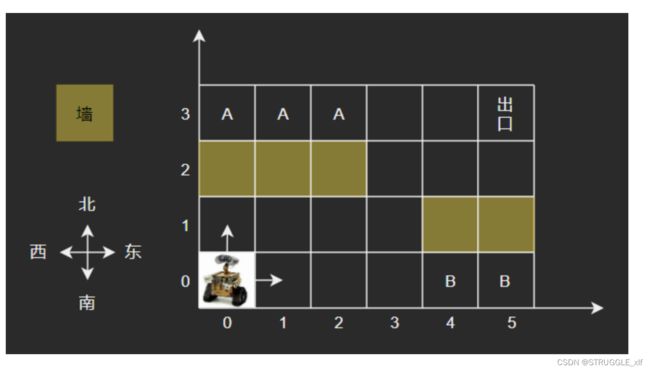- web前端进阶之Javascript设计模式面向对象篇
jia林
前言:在此说明Javascript设计模式所讲内容和知识点来自双越老师(wangEditor富文本开源作者)的视频,内容通俗易懂,受益匪浅,结合自己的学习心得整理成笔记,与大家分享,愿在前端的道路上越走越远.....从“写好代码”到“设计代码”的过程,不仅是技术的提升,更是编程思维的提升,而这其中最关键的就是设计模式,是否理解并掌握设计模式,也是衡量程序员能力的标准之一。学习前提使用过jquery
- 快速排序Java代码简洁实现
SKY技术修炼指南
算法
学习过数据结构的同学们都知道,快速排序算法是一种时间复杂度为O(nlogn)的排序算法,在各种排序算法中算是较为高效的方法,企业面试中也经常有手撕快排的环节。本文将阐述算法的基本思想,并用Java代码的形式实现快速排序代码。算法思想快速排序主要采用分治的基本思想,每次将一个位置上的数据归位,此时该数左边的所有数据都比该数小,右边所有的数据都比该数大,然后递归将已归位的数据左右两边再次进行快排,从而
- 如何防止重复提交订单?
天天摸鱼的java工程师
java
如何防止重复提交订单?作者:Java后端开发工程师一、背景介绍:为什么会产生重复提交?在电商平台中,用户提交订单是一个非常敏感的动作。这通常涉及:库存扣减优惠券核销支付下单消息发送但用户总喜欢:点两次“提交订单”按钮网络卡顿时刷新页面使用浏览器回退再次提交结果就是:重复提交订单,造成资源浪费,甚至业务损失!二、问题分析:重复提交的常见场景场景示例用户行为多次点击按钮、浏览器刷新接口幂等性差接口无幂
- 如何设计一个高并发短链接服务(如 bit.ly)?
天天摸鱼的java工程师
java
如何设计一个高并发短链接服务(如bit.ly)?引言:在社交媒体营销、短信推广等场景中,短链接服务已成为互联网基础设施的关键组件。全球每天有数十亿短链接被创建,如Bitly、TinyURL等服务每天处理数十亿请求。作为一名拥有8年经验的Java架构师,我曾主导设计过日处理千万级短链接的系统。今天我将从原理到实现,深度解析如何构建一个高性能、高可用、可扩展的短链接服务。一、业务场景与技术挑战1.1核
- 如何将电商单体应用拆分为微服务?拆分粒度如何权衡?
天天摸鱼的java工程师
微服务java
如何将电商单体应用拆分为微服务?拆分粒度如何权衡?引言:在电商行业高速发展的今天,系统扩展性和交付速度成为核心竞争力。许多企业初期采用单体架构快速上线,但随着业务规模扩大,单体应用逐渐成为制约发展的瓶颈。你是否也面临这样的挑战:代码库臃肿不堪、发布周期越来越长、局部故障导致全局瘫痪、技术栈升级举步维艰?作为一名有8年开发经验的Java工程师,我曾主导多个大型电商系统的微服务拆分。今天我将分享从业务
- uni-app跨平台开发知识点总结
uni-app简介uni-app概述:uni-app是一个使用Vue.js开发所有前端应用的框架,开发者编写一套代码,可发布到iOS、Android、Web(响应式)、以及各种小程序(微信/支付宝/百度/头条/飞书/QQ/快手/钉钉/淘宝)、快应用等多个平台。uni-app由来:是为了解决跨平台开发的问题。在移动应用开发中,不同平台(如iOS、Android)有不同的开发语言和技术栈,这导致开发者
- 如何设计一个社交平台的关注/粉丝系统?一位8年Java开发者的架构心路
天天摸鱼的java工程师
java架构开发语言
如何设计一个社交平台的关注/粉丝系统?——一位8年Java开发者的架构心路当你的社交平台面临百万用户实时互动,如何确保关注操作毫秒级响应?如何保证粉丝列表的实时性和一致性?这个看似基础的功能背后,隐藏着读写扩散、数据一致性、热点用户等架构难题。本文将带你从业务模型到代码落地,构建一个支撑千万级关系的社交系统。一、业务场景与核心挑战典型关注业务流程:未关注已关注用户A关注用户B关系检查写入关注关系更
- junit mockito_如何学习Java中的单元测试:JUnit和Mockito课程
dfsgwe1231
单元测试编程语言python人工智能java
junitmockito大家好,今天我将讨论JUnit和单元测试,这是任何软件开发人员的关键技能之一。您可能已经知道JUnit和Mockito是Java应用程序中最受欢迎的两个测试库,并且几乎在每个Java应用程序类路径中都可以找到它们。我经常与Java开发人员见面并一起工作,这些Java开发人员非常了解Java但还没有编写单个单元测试。当我问他们为什么不编写单元测试时,他们提出了许多借口,例如他
- (二十三)Java反射机制深度解析:原理、应用与最佳实践
MeyrlNotFound
JAVA开发语言java
一、反射机制概述1.1什么是反射机制Java反射机制(Reflection)是Java语言中一种强大的内省(introspection)能力,它允许程序在运行时(runtime)获取类的内部信息,并能直接操作类或对象的内部属性及方法。这种"动态性"使得Java程序可以突破编译时的限制,实现许多灵活的功能。反射的核心思想是:在运行时而非编译时获取类型信息并执行操作。这与传统的静态编程形成鲜明对比,在
- ubuntu18.04安装geemap
阿西是有梦想的咸鱼
python编程之路遥感影像处理可视化可视化pythonubuntu
文章目录安装测试GEE提供了JavaScript和PythonAPI,可以向EarthEngine服务器发出计算请求。与GEEJavaScriptAPI相比,PythonAPI缺乏易于理解的操作文档和交互式可视化结果的功能。由此,geemap诞生并填补了这一空白[1]。这里给大家介绍下我折腾了一晚上才搞定的geemap的安装及测试过程。这里是geemap的GitHub参考链接。安装如Github中
- java list使用
奋斗live
一、增加、删除、查询可使用add、remove、get方法,如下System.out.println("list的添加、获取和删除元素");Listanimal=newArrayListanimal=newArrayListanimal=newArrayListanimal=newArrayListanimal=newArrayListanimal=newArrayListphone=newArr
- JUC——创建线程的方法
机器滴小白
JAVA学习笔记java开发语言JUC并发编程
1.继承Thread类原理:通过继承Thread类并重写其run()方法,定义线程的执行逻辑。(Thread类实现了Runnable接口)调用start()方法启动线程(JVM会自动调用run())。特点简单直接,适合快速实现线程逻辑。局限性:Java是单继承的,继承Thread后无法再继承其他类。//1.继承Thread类classMyThreadextendsThread{@Overridep
- java 结合 FreeMarker 和 Docx4j 来生成包含图片的 docx 文件
liangblog
Java生产环境全栈开发Java进阶javapython开发语言
使用FreeMarker生成HTML,然后通过Docx4j将HTML转换为.docx文件;步骤1.添加依赖确保你的项目中包含了FreeMarker和Docx4j的依赖。以下是Maven的pom.xml示例:
- 前端实现多文件下载功能的思路与代码分享
好运仔dzl
技术开发java开发语言
73万字的Java面试题库【全网最详细-找工作/实习必备神器】:https://mp.weixin.qq.com/mp/appmsgalbum?__biz=MzE5MTY1NzczOA==&action=getalbum&album_id=4057608455186808839Java面试题库ps:网上面试题多而杂,自己整理了一套面试题,我靠这套面试题2年经验拿15k~前端实现多文件下载功能的思路
- 如何在 Stimulsoft JavaScript 报表组件中,设置设计器与查看器主题风格
CodeCraft Studio
控件报表图表开发javascript开发语言ecmascriptStimulsoftDashboardReport报表仪表盘工具
在现代软件开发中,图形用户界面(GUI)不仅仅是功能的承载体,更是用户体验的关键组成部分。一个美观、统一且具备高度可定制性的界面,能够显著提升系统的专业感和使用效率。Stimulsoft作为功能强大的报表和仪表板解决方案提供商,其JavaScript版本(StimulsoftReports.JS与StimulsoftDashboards.JS)为开发者提供了丰富的内置主题支持,助力快速构建符合品牌
- [Java实战]Spring Boot 整合 Freemarker (十一)
曼岛_
Java实战javaspringboot开发语言
[Java实战]SpringBoot整合Freemarker(十一)引言ApacheFreeMarker作为一款高性能的模板引擎,凭借其简洁语法、卓越性能和灵活扩展性,在JavaWeb开发中占据重要地位。结合SpringBoot的自动化配置能力,开发者能快速构建动态页面、生成报表或定制代码。本文将系统讲解整合流程、实战技巧、性能优化方案,并针对企业级场景提供深度解决方案。一、Freemarker核
- Blazor使用TXTextControl控件编辑报告
落叶飞花_
javascript开发语言
文章目录1环境2课程链接3学习使用(加载TextControl控件)3.1DocumentEditor3.2DocumentViewer4javascriptApi列表5加载文档(TextControl加载文档,JS互操作)6开启修改跟踪(word中的修订)7文档修改保存8文档编辑,拖拽展示图片9文档编辑,使用ApplicationField10模板设计11插入图片11.1拖拽插入图片11.2Me
- Java线程池
Executor接口Executor接口是线程池的基类,基本上所有的线程池类都直接或间接继承此类。接口定义publicinterfaceExecutor{voidexecute(Runnablecommand);}ExecutorService接口接口定义ExecutorService接口继承自Executor接口。publicinterfaceExecutorServiceextendsExec
- Java 原生 HTTP Client
en-route
微服务之间如何调用javahttp开发语言
介绍Java原生HttpClient是从Java11开始引入的标准库,用于简化HTTP请求的发送与响应处理。它支持同步和异步请求,并内置对HTTP/1.1和HTTP/2协议的支持。HttpClient提供了易用的API来设置请求头、请求体、处理响应以及配置SSL/TLS加密等安全功能。一个简单的例子发送GET请求并将打印ResponseHttpClientclient=HttpClient.new
- 如何用 Mockito 玩转单元测试
en-route
单元测试
介绍Mockito是一个广泛使用的Java测试框架,它提供了简洁而强大的功能,用于模拟(mock)和验证对象的行为,尤其是在单元测试中。当我们需要测试某个类的功能时,但又不希望依赖其外部组件或复杂的对象时,可以使用Mockito来创建模拟对象,这些模拟对象可以控制方法返回值、抛出异常或执行特定的逻辑。Mockito使得测试变得更加独立、可靠和可维护,特别是在测试依赖较多或外部系统交互的代码时。从一
- 重塑未来:AI如何重新定义全栈开发
熊猫钓鱼>_>
人工智能
在传统认知中,全栈开发者被誉为技术界的“全能选手”。——他们需要精通前端界面构建(HTML/CSS/JavaScript)、后端业务逻辑实现(Python/Java/Node.js)、数据库设计优化(MySQL/MongoDB)以及服务器部署运维(Linux/Docker)。这种“一人包打天下”的能力模型长期被视为高效开发的黄金标准,尤其受到创业公司和小型团队的青睐,因为它能大幅减少沟通成本,加速
- ChatGPT 之后的下一步是什么?四个迫在眉睫的进步
iCloudEnd
OpenAI的文本生成器ChatGPT进入公共领域已经两个半月了,该机器人令人印象深刻且深思熟虑的答案已经引起了1300万日常用户的注意,他们已经将其用于一般问题、开发想法和写作全长文章。尽管ChatGPT存在重大缺陷(例如一些事实不准确),但许多人担心这可能对劳动力、学校、新闻业等产生影响。然而,我们可能正处于一场巨大的人工智能革命的开端。OpenAI总裁兼联合创始人GregBrockman于1
- Javascript 严格模式use strict详解
滴水成川
JavaScript学习记录javascriptusestrict
一、概述除了正常运行模式,ECMAscript5添加了第二种运行模式:"严格模式"(strictmode)。顾名思义,这种模式使得Javascript在更严格的条件下运行。设立"严格模式"的目的,主要有以下几个:-消除Javascript语法的一些不合理、不严谨之处,减少一些怪异行为;-消除代码运行的一些不安全之处,保证代码运行的安全;-提高编译器效率,增加运行速度;-为未来新版本的Javascr
- List和Map的区别
雪碧聊技术
Java八股文list数据结构
欢迎来到我的Java八股文专栏!各位程序员小伙伴们好呀~我是雪碧聊技术,很高兴能在CSDN与大家相遇!✨专栏介绍这个专栏将专注于分享Java面试中的经典"八股文"知识点,内容涵盖:Java基础核心概念JVM原理与性能调优多线程与并发编程️设计模式实战️常用框架源码解析⚙️系统架构设计思想为什么选择这个专栏?精准定位:直击大厂Java面试高频考点系统全面:从基础到进阶,构建完整知识体系实战导向:理论
- 领域驱动设计精要
我是廖志伟
Java场景面试宝典DDDDomain-DrivenDesignSoftwareArchitecture
我是廖志伟,一名Java开发工程师、《Java项目实战——深入理解大型互联网企业通用技术》(基础篇)、(进阶篇)、(架构篇)、《解密程序员的思维密码——沟通、演讲、思考的实践》作者、清华大学出版社签约作家、Java领域优质创作者、CSDN博客专家、阿里云专家博主、51CTO专家博主、产品软文专业写手、技术文章评审老师、技术类问卷调查设计师、幕后大佬社区创始人、开源项目贡献者。拥有多年一线研发和团队
- DDD核心知识解析
我是廖志伟
Java场景面试宝典DDDSoftwareDesignBusinessLogic
我是廖志伟,一名Java开发工程师、《Java项目实战——深入理解大型互联网企业通用技术》(基础篇)、(进阶篇)、(架构篇)、《解密程序员的思维密码——沟通、演讲、思考的实践》作者、清华大学出版社签约作家、Java领域优质创作者、CSDN博客专家、阿里云专家博主、51CTO专家博主、产品软文专业写手、技术文章评审老师、技术类问卷调查设计师、幕后大佬社区创始人、开源项目贡献者。拥有多年一线研发和团队
- ShardingSphere核心机制解析
我是廖志伟
Java场景面试宝典DatabaseMiddlewareDistributedDatabaseShardingSphere
我是廖志伟,一名Java开发工程师、《Java项目实战——深入理解大型互联网企业通用技术》(基础篇)、(进阶篇)、(架构篇)、《解密程序员的思维密码——沟通、演讲、思考的实践》作者、清华大学出版社签约作家、Java领域优质创作者、CSDN博客专家、阿里云专家博主、51CTO专家博主、产品软文专业写手、技术文章评审老师、技术类问卷调查设计师、幕后大佬社区创始人、开源项目贡献者。拥有多年一线研发和团队
- JVM与Spring Boot核心解析
我是廖志伟
Java场景面试宝典JavaJVMSpringBoot
我是廖志伟,一名Java开发工程师、《Java项目实战——深入理解大型互联网企业通用技术》(基础篇)、(进阶篇)、(架构篇)清华大学出版社签约作家、Java领域优质创作者、CSDN博客专家、阿里云专家博主、51CTO专家博主、产品软文专业写手、技术文章评审老师、技术类问卷调查设计师、幕后大佬社区创始人、开源项目贡献者。拥有多年一线研发和团队管理经验,研究过主流框架的底层源码(Spring、Spri
- 领域驱动设计(DDD)实践解析
我是廖志伟,一名Java开发工程师、《Java项目实战——深入理解大型互联网企业通用技术》(基础篇)、(进阶篇)、(架构篇)清华大学出版社签约作家、Java领域优质创作者、CSDN博客专家、阿里云专家博主、51CTO专家博主、产品软文专业写手、技术文章评审老师、技术类问卷调查设计师、幕后大佬社区创始人、开源项目贡献者。拥有多年一线研发和团队管理经验,研究过主流框架的底层源码(Spring、Spri
- Spring框架核心技术解析
我是廖志伟,一名Java开发工程师、《Java项目实战——深入理解大型互联网企业通用技术》(基础篇)、(进阶篇)、(架构篇)清华大学出版社签约作家、Java领域优质创作者、CSDN博客专家、阿里云专家博主、51CTO专家博主、产品软文专业写手、技术文章评审老师、技术类问卷调查设计师、幕后大佬社区创始人、开源项目贡献者。拥有多年一线研发和团队管理经验,研究过主流框架的底层源码(Spring、Spri
- java观察者模式
3213213333332132
java设计模式游戏观察者模式
观察者模式——顾名思义,就是一个对象观察另一个对象,当被观察的对象发生变化时,观察者也会跟着变化。
在日常中,我们配java环境变量时,设置一个JAVAHOME变量,这就是被观察者,使用了JAVAHOME变量的对象都是观察者,一旦JAVAHOME的路径改动,其他的也会跟着改动。
这样的例子很多,我想用小时候玩的老鹰捉小鸡游戏来简单的描绘观察者模式。
老鹰会变成观察者,母鸡和小鸡是
- TFS RESTful API 模拟上传测试
ronin47
TFS RESTful API 模拟上传测试。
细节参看这里:https://github.com/alibaba/nginx-tfs/blob/master/TFS_RESTful_API.markdown
模拟POST上传一个图片:
curl --data-binary @/opt/tfs.png http
- PHP常用设计模式单例, 工厂, 观察者, 责任链, 装饰, 策略,适配,桥接模式
dcj3sjt126com
设计模式PHP
// 多态, 在JAVA中是这样用的, 其实在PHP当中可以自然消除, 因为参数是动态的, 你传什么过来都可以, 不限制类型, 直接调用类的方法
abstract class Tiger {
public abstract function climb();
}
class XTiger extends Tiger {
public function climb()
- hibernate
171815164
Hibernate
main,save
Configuration conf =new Configuration().configure();
SessionFactory sf=conf.buildSessionFactory();
Session sess=sf.openSession();
Transaction tx=sess.beginTransaction();
News a=new
- Ant实例分析
g21121
ant
下面是一个Ant构建文件的实例,通过这个实例我们可以很清楚的理顺构建一个项目的顺序及依赖关系,从而编写出更加合理的构建文件。
下面是build.xml的代码:
<?xml version="1
- [简单]工作记录_接口返回405原因
53873039oycg
工作
最近调接口时候一直报错,错误信息是:
responseCode:405
responseMsg:Method Not Allowed
接口请求方式Post.
- 关于java.lang.ClassNotFoundException 和 java.lang.NoClassDefFoundError 的区别
程序员是怎么炼成的
真正完成类的加载工作是通过调用 defineClass来实现的;
而启动类的加载过程是通过调用 loadClass来实现的;
就是类加载器分为加载和定义
protected Class<?> findClass(String name) throws ClassNotFoundExcept
- JDBC学习笔记-JDBC详细的操作流程
aijuans
jdbc
所有的JDBC应用程序都具有下面的基本流程: 1、加载数据库驱动并建立到数据库的连接。 2、执行SQL语句。 3、处理结果。 4、从数据库断开连接释放资源。
下面我们就来仔细看一看每一个步骤:
其实按照上面所说每个阶段都可得单独拿出来写成一个独立的类方法文件。共别的应用来调用。
1、加载数据库驱动并建立到数据库的连接:
Html代码
St
- rome创建rss
antonyup_2006
tomcatcmsxmlstrutsOpera
引用
1.RSS标准
RSS标准比较混乱,主要有以下3个系列
RSS 0.9x / 2.0 : RSS技术诞生于1999年的网景公司(Netscape),其发布了一个0.9版本的规范。2001年,RSS技术标准的发展工作被Userland Software公司的戴夫 温那(Dave Winer)所接手。陆续发布了0.9x的系列版本。当W3C小组发布RSS 1.0后,Dave W
- html表格和表单基础
百合不是茶
html表格表单meta锚点
第一次用html来写东西,感觉压力山大,每次看见别人发的都是比较牛逼的 再看看自己什么都还不会,
html是一种标记语言,其实很简单都是固定的格式
_----------------------------------------表格和表单
表格是html的重要组成部分,表格用在body里面的
主要用法如下;
<table>
&
- ibatis如何传入完整的sql语句
bijian1013
javasqlibatis
ibatis如何传入完整的sql语句?进一步说,String str ="select * from test_table",我想把str传入ibatis中执行,是传递整条sql语句。
解决办法:
<
- 精通Oracle10编程SQL(14)开发动态SQL
bijian1013
oracle数据库plsql
/*
*开发动态SQL
*/
--使用EXECUTE IMMEDIATE处理DDL操作
CREATE OR REPLACE PROCEDURE drop_table(table_name varchar2)
is
sql_statement varchar2(100);
begin
sql_statement:='DROP TABLE '||table_name;
- 【Linux命令】Linux工作中常用命令
bit1129
linux命令
不断的总结工作中常用的Linux命令
1.查看端口被哪个进程占用
通过这个命令可以得到占用8085端口的进程号,然后通过ps -ef|grep 进程号得到进程的详细信息
netstat -anp | grep 8085
察看进程ID对应的进程占用的端口号
netstat -anp | grep 进程ID
&
- 优秀网站和文档收集
白糖_
网站
集成 Flex, Spring, Hibernate 构建应用程序
性能测试工具-JMeter
Hmtl5-IOCN网站
Oracle精简版教程网站
鸟哥的linux私房菜
Jetty中文文档
50个jquery必备代码片段
swfobject.js检测flash版本号工具
- angular.extend
boyitech
AngularJSangular.extendAngularJS API
angular.extend 复制src对象中的属性去dst对象中. 支持多个src对象. 如果你不想改变一个对象,你可以把dst设为空对象{}: var object = angular.extend({}, object1, object2). 注意: angular.extend不支持递归复制. 使用方法: angular.extend(dst, src); 参数:
- java-谷歌面试题-设计方便提取中数的数据结构
bylijinnan
java
网上找了一下这道题的解答,但都是提供思路,没有提供具体实现。其中使用大小堆这个思路看似简单,但实现起来要考虑很多。
以下分别用排序数组和大小堆来实现。
使用大小堆:
import java.util.Arrays;
public class MedianInHeap {
/**
* 题目:设计方便提取中数的数据结构
* 设计一个数据结构,其中包含两个函数,1.插
- ajaxFileUpload 针对 ie jquery 1.7+不能使用问题修复版本
Chen.H
ajaxFileUploadie6ie7ie8ie9
jQuery.extend({
handleError: function( s, xhr, status, e ) {
// If a local callback was specified, fire it
if ( s.error ) {
s.error.call( s.context || s, xhr, status, e );
}
- [机器人制造原则]机器人的电池和存储器必须可以替换
comsci
制造
机器人的身体随时随地可能被外来力量所破坏,但是如果机器人的存储器和电池可以更换,那么这个机器人的思维和记忆力就可以保存下来,即使身体受到伤害,在把存储器取下来安装到一个新的身体上之后,原有的性格和能力都可以继续维持.....
另外,如果一
- Oracle Multitable INSERT 的用法
daizj
oracle
转载Oracle笔记-Multitable INSERT 的用法
http://blog.chinaunix.net/uid-8504518-id-3310531.html
一、Insert基础用法
语法:
Insert Into 表名 (字段1,字段2,字段3...)
Values (值1,
- 专访黑客历史学家George Dyson
datamachine
on
20世纪最具威力的两项发明——核弹和计算机出自同一时代、同一群年青人。可是,与大名鼎鼎的曼哈顿计划(第二次世界大战中美国原子弹研究计划)相 比,计算机的起源显得默默无闻。出身计算机世家的历史学家George Dyson在其新书《图灵大教堂》(Turing’s Cathedral)中讲述了阿兰·图灵、约翰·冯·诺依曼等一帮子天才小子创造计算机及预见计算机未来
- 小学6年级英语单词背诵第一课
dcj3sjt126com
englishword
always 总是
rice 水稻,米饭
before 在...之前
live 生活,居住
usual 通常的
early 早的
begin 开始
month 月份
year 年
last 最后的
east 东方的
high 高的
far 远的
window 窗户
world 世界
than 比...更
- 在线IT教育和在线IT高端教育
dcj3sjt126com
教育
codecademy
http://www.codecademy.com codeschool
https://www.codeschool.com teamtreehouse
http://teamtreehouse.com lynda
http://www.lynda.com/ Coursera
https://www.coursera.
- Struts2 xml校验框架所定义的校验文件
蕃薯耀
Struts2 xml校验Struts2 xml校验框架Struts2校验
>>>>>>>>>>>>>>>>>>>>>>>>>>>>>>>>>>>>>>
蕃薯耀 2015年7月11日 15:54:59 星期六
http://fa
- mac下安装rar和unrar命令
hanqunfeng
mac
1.下载:http://www.rarlab.com/download.htm 选择
RAR 5.21 for Mac OS X 2.解压下载后的文件 tar -zxvf rarosx-5.2.1.tar 3.cd rar sudo install -c -o $USER unrar /bin #输入当前用户登录密码 sudo install -c -o $USER rar
- 三种将list转换为map的方法
jackyrong
list
在本文中,介绍三种将list转换为map的方法:
1) 传统方法
假设有某个类如下
class Movie {
private Integer rank;
private String description;
public Movie(Integer rank, String des
- 年轻程序员需要学习的5大经验
lampcy
工作PHP程序员
在过去的7年半时间里,我带过的软件实习生超过一打,也看到过数以百计的学生和毕业生的档案。我发现很多事情他们都需要学习。或许你会说,我说的不就是某种特定的技术、算法、数学,或者其他特定形式的知识吗?没错,这的确是需要学习的,但却并不是最重要的事情。他们需要学习的最重要的东西是“自我规范”。这些规范就是:尽可能地写出最简洁的代码;如果代码后期会因为改动而变得凌乱不堪就得重构;尽量删除没用的代码,并添加
- 评“女孩遭野蛮引产致终身不育 60万赔偿款1分未得”医腐深入骨髓
nannan408
先来看南方网的一则报道:
再正常不过的结婚、生子,对于29岁的郑畅来说,却是一个永远也无法实现的梦想。从2010年到2015年,从24岁到29岁,一张张新旧不一的诊断书记录了她病情的同时,也清晰地记下了她人生的悲哀。
粗暴手术让人发寒
2010年7月,在酒店做服务员的郑畅发现自己怀孕了,可男朋友却联系不上。在没有和家人商量的情况下,她决定堕胎。
12月5日,
- 使用jQuery为input输入框绑定回车键事件 VS 为a标签绑定click事件
Everyday都不同
jspinput回车键绑定clickenter
假设如题所示的事件为同一个,必须先把该js函数抽离出来,该函数定义了监听的处理:
function search() {
//监听函数略......
}
为input框绑定回车事件,当用户在文本框中输入搜索关键字时,按回车键,即可触发search():
//回车绑定
$(".search").keydown(fun
- EXT学习记录
tntxia
ext
1. 准备
(1) 官网:http://www.sencha.com/
里面有源代码和API文档下载。
EXT的域名已经从www.extjs.com改成了www.sencha.com ,但extjs这个域名会自动转到sencha上。
(2)帮助文档:
想要查看EXT的官方文档的话,可以去这里h
- mybatis3的mapper文件报Referenced file contains errors
xingguangsixian
mybatis
最近使用mybatis.3.1.0时无意中碰到一个问题:
The errors below were detected when validating the file "mybatis-3-mapper.dtd" via the file "account-mapper.xml". In most cases these errors can be d

